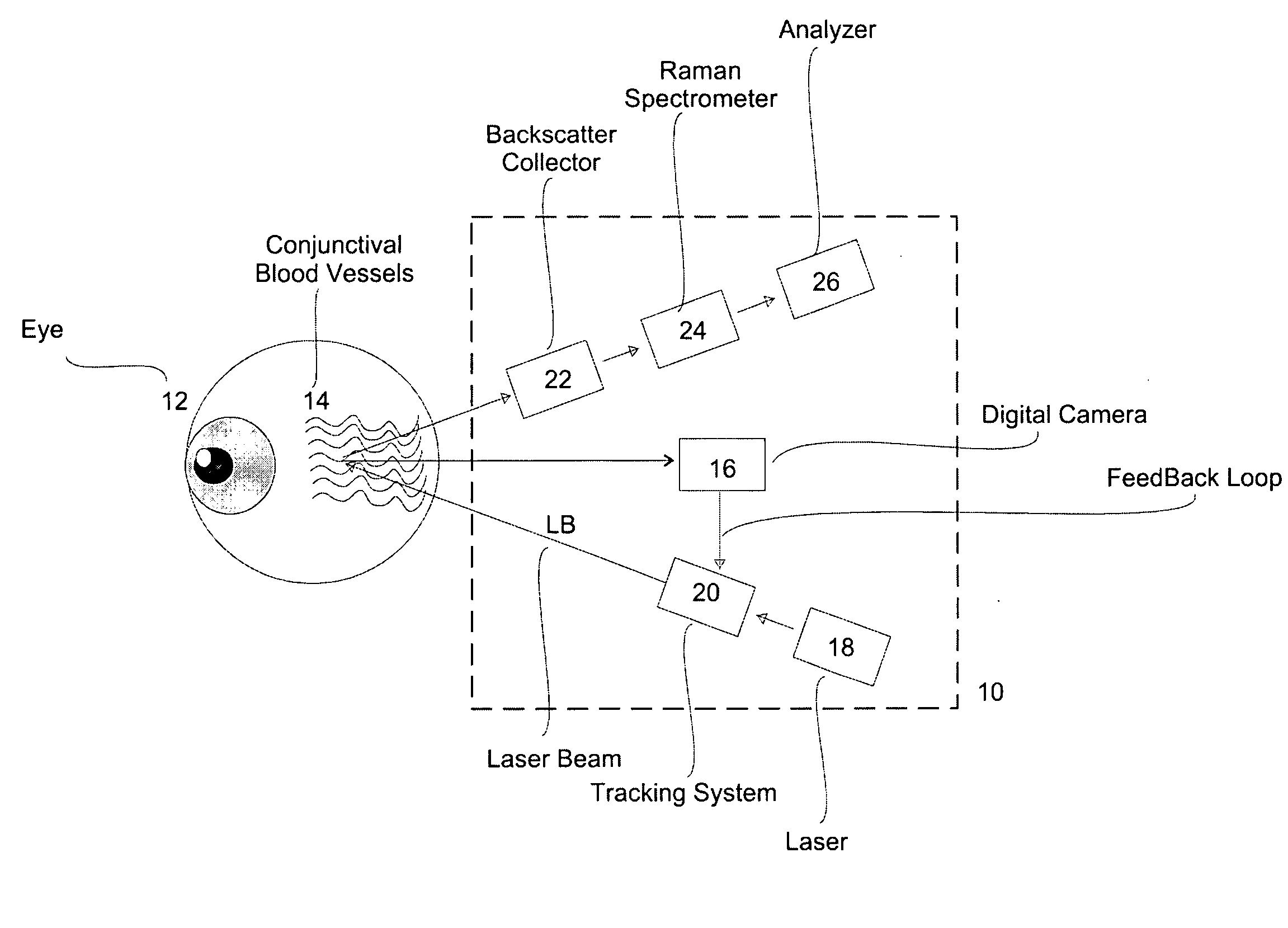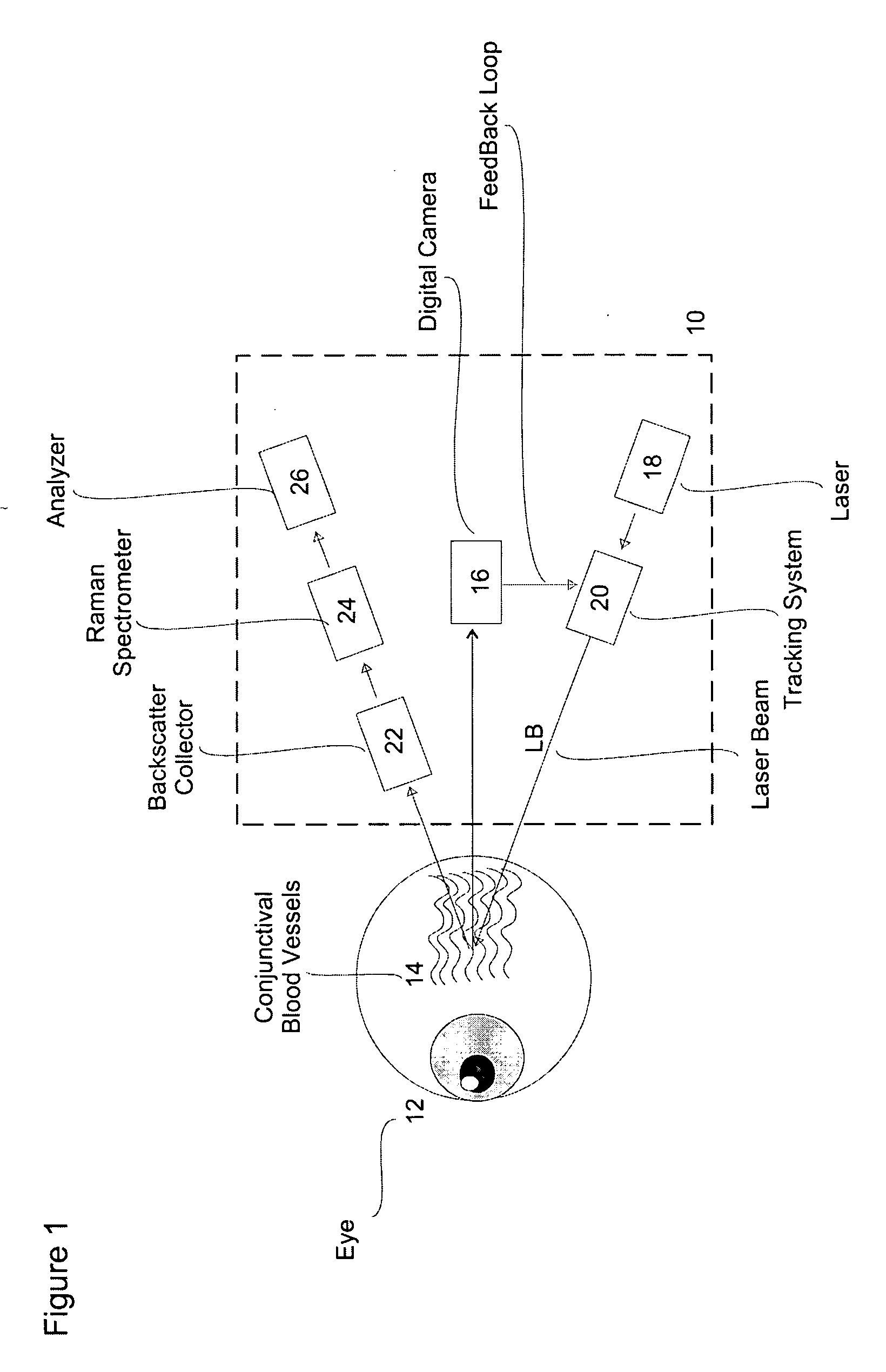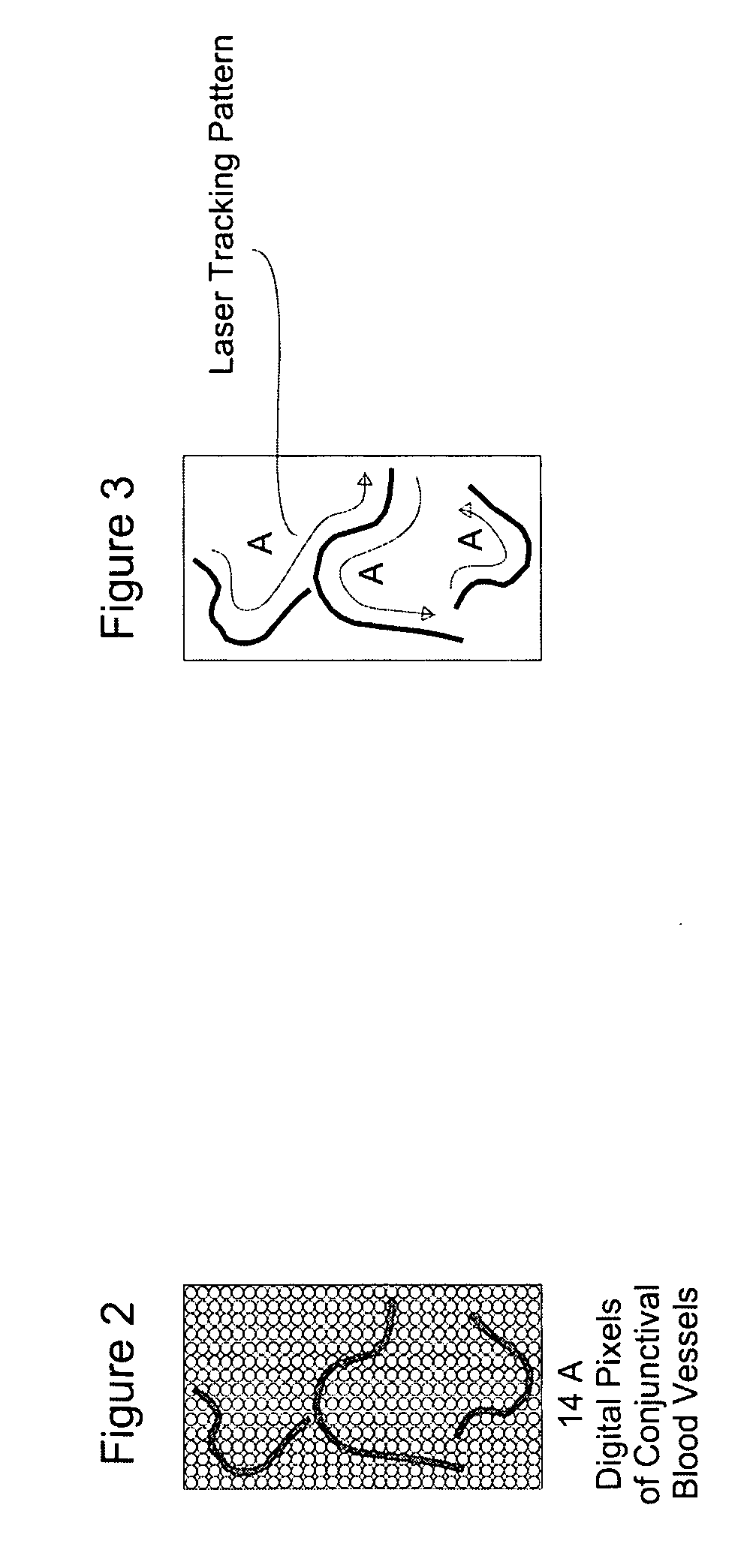Method and apparatus for performing in-vivo blood analysis using raman spectrum
a technology of raman spectrum and in-vivo blood analysis, which is applied in the direction of optical radiation measurement, instruments, spectrometry/spectrophotometry/monochromators, etc., can solve the problems of low quantum efficiency, inconvenient and even painful process of blood drawing, and inability to perform in-vivo raman measurements
- Summary
- Abstract
- Description
- Claims
- Application Information
AI Technical Summary
Benefits of technology
Problems solved by technology
Method used
Image
Examples
Embodiment Construction
[0030] The present invention describes a system and method for performing in vivo blood analysis. This is accomplished by directing a probe beam (such as a monochromatic, coherent, polarized, quantum state entangled, exclusive or nearly exclusive co-incident photon beam) at the conjunctiva and its blood vessels of a patient and analyzing the resulting conventional Raman backscatter spectrum and the changes in the quantum state characteristics of the entangled photons.
[0031] It is well known, in Raman spectroscopy, that in order to improve the quantum efficiency, it is necessary to increase the photon density. But the relatively high power densities used in this technique can cause tissue damage or destruction, which is unacceptable, especially in a highly critical organ, such as a person's eyes. The high power density may also induce black body interference, due to heating by the laser, which may further obscure the Raman spectrum.
[0032] An intuitive solution would be to attenuate...
PUM
| Property | Measurement | Unit |
|---|---|---|
| wavelength | aaaaa | aaaaa |
| wavelength | aaaaa | aaaaa |
| depolarization ratio | aaaaa | aaaaa |
Abstract
Description
Claims
Application Information
 Login to View More
Login to View More - R&D
- Intellectual Property
- Life Sciences
- Materials
- Tech Scout
- Unparalleled Data Quality
- Higher Quality Content
- 60% Fewer Hallucinations
Browse by: Latest US Patents, China's latest patents, Technical Efficacy Thesaurus, Application Domain, Technology Topic, Popular Technical Reports.
© 2025 PatSnap. All rights reserved.Legal|Privacy policy|Modern Slavery Act Transparency Statement|Sitemap|About US| Contact US: help@patsnap.com



